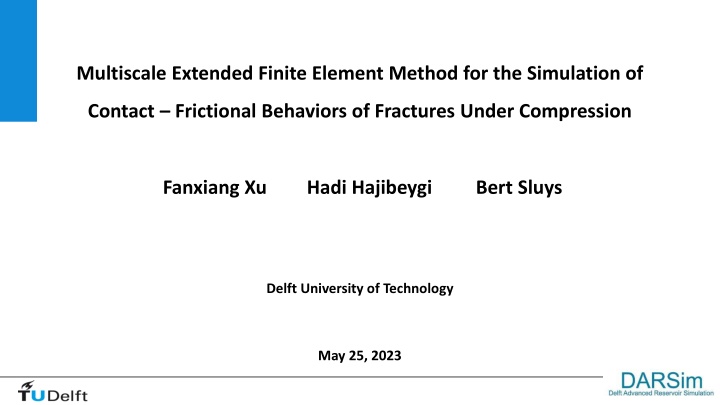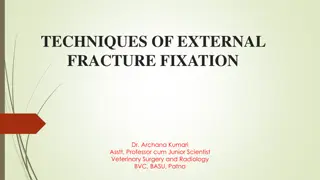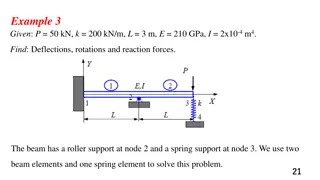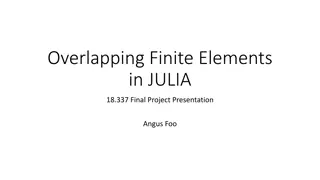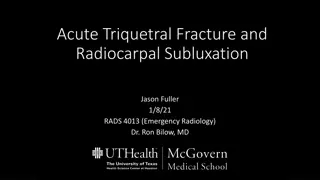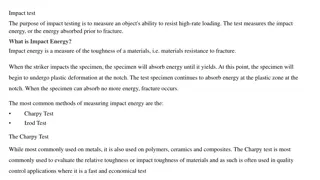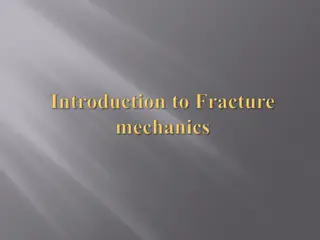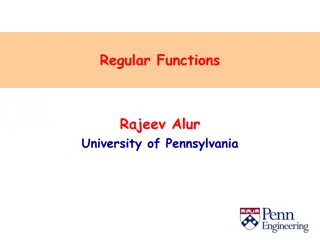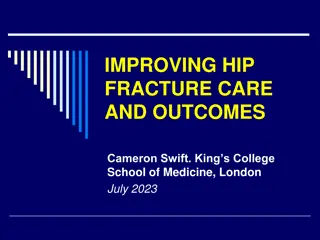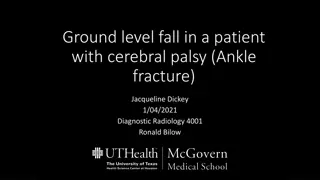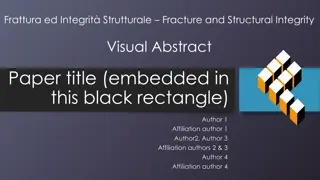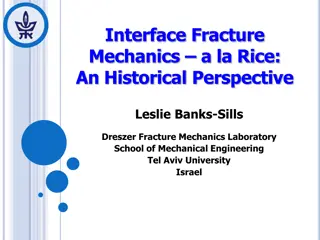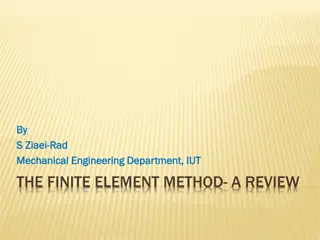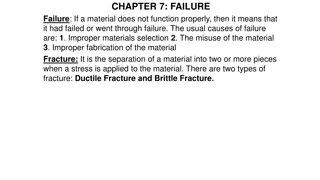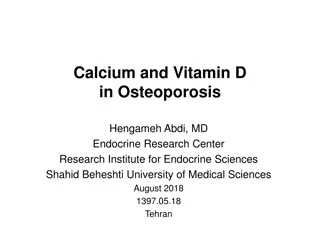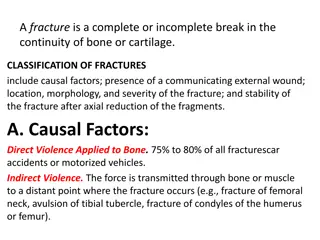Multiscale Extended Finite Element Method for Fracture Contact Simulation
Simulation of contact frictional behaviors of fractures under compression using the Multiscale Extended Finite Element Method (XFEM). The method involves solving governing equations, incorporating additional degrees of freedom, and employing penalty methods. MS-XFEM enhances computational efficiency by solving on coarse-scale meshes and interpolating solutions to fine-scale meshes. Test cases involve multiple cracks under compression with specific mesh configurations and frictional coefficients.
Download Presentation

Please find below an Image/Link to download the presentation.
The content on the website is provided AS IS for your information and personal use only. It may not be sold, licensed, or shared on other websites without obtaining consent from the author.If you encounter any issues during the download, it is possible that the publisher has removed the file from their server.
You are allowed to download the files provided on this website for personal or commercial use, subject to the condition that they are used lawfully. All files are the property of their respective owners.
The content on the website is provided AS IS for your information and personal use only. It may not be sold, licensed, or shared on other websites without obtaining consent from the author.
E N D
Presentation Transcript
Multiscale Extended Finite Element Method for the Simulation of Contact Frictional Behaviors of Fractures Under Compression Fanxiang Xu Hadi Hajibeygi Bert Sluys Delft University of Technology May 25, 2023
Simulation of Deformable Fractured Formation Reservoirs are highly & densely fractured Geo-mechanics is important on a bigger domain than reservoir itself Fractures can slide & grow Accurate & Efficient simulations are crucial ! [?] 1 [1]. Hajibeygi, H. (2021). Multiscale lecture notes.
Governing Equations Momentum balance (LEFM) ? ? + ? = ? on ? ? ? = ?? on ?? Contact frictional law No penetration ?? ?, ?? ?, ?? ??= ? Coulomb s law of friction ??? ????? = ? ???? ????? < ? 2
XFEM Efficient in simulation of fractures Structured grids Extra DOFs in solution[1] ? = ???? + ????? ? ? ? ? ? ???????? ??? ?????????? Additional blocks ?? ?? ??? ??? ??? ??? ? ?= 3 [1]. Mo s, N. et al. (1999). A finite element method for crack growth without remeshing.
Compression + XFEM Penalty method[1] (Artificial high stiffness) ? ? ? ? ? ? ?+? ???? ???? ???? ? ??? ??? ??? = ? ? ???+ ???? ???? ???? Too geoscience applications ! many extra DOFs for We propose multiscale XFEM (MS-XFEM) [?] [1]. Liu, F. et al.(2008). A contact algorithm for frictional crack propagation with the extended finite element method. [2]. Bonter, D. et al. (2019). An integrated approach for fractured basement characterization: the Lancaster Field, a case study in the UK. 4
MS-XFEM Solve the problem on the coarse scale mesh Prolongation (Interpolate coarse scale solutions into fine scale) ??= ? ?? ?-- basis function matrix ?? -- coarse-scale solution ?? -- fine scale solution 5
MS-XFEM Compute on coarse scale mesh ??= ? (? ?? ?) ? (? ?) ?? ?? ? Restriction matrix ? = ?? No extra DOFs on coarse scale system 6 [1]. Xu, F. et al.(2021). Multiscale extended finite element method for deformable fractured porous media.
Test Case Multiple cracks under compression FS mesh: 50 x 50, MS mesh: 5 x 5 ? = 106 ?? and ? = 0.3 Frictional coefficient ??= 0.1 Penalty parameters [108,108] Tolerance for residual: 10 8 Tolerance for displacement: 10 3 Tolerance for preconditioned GMRES: 10 2 7
Test Case MS-XFEM result is accurate ?? of fine scale ( 50 x 50 ) ?? of MS-XFEM ( 5 x 5 ) 8
Test Case MS-XFEM combined with GMRES can reduce errors greatly Error plots show local peaks Errors in x direction Errors in y direction 9
Test Case Basis functions capture the discontinuities well 10
Conclusions MS-XFEM is much better applicable for geoscience projects than XFEM XFEM was used for local basis functions, FEM for coarse-scale system! MS-XFEM was found accurate for simulation of contact-frictional behaviors under compressive stress 11
Thank You f.xu-4@tudelft.nl
